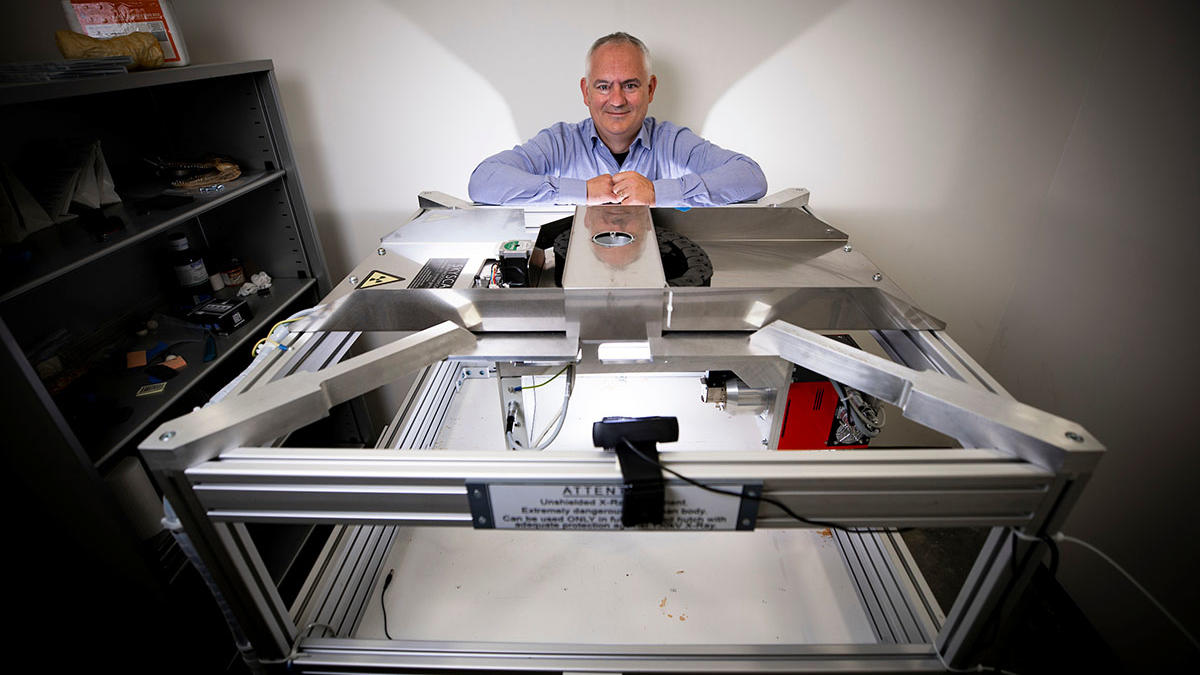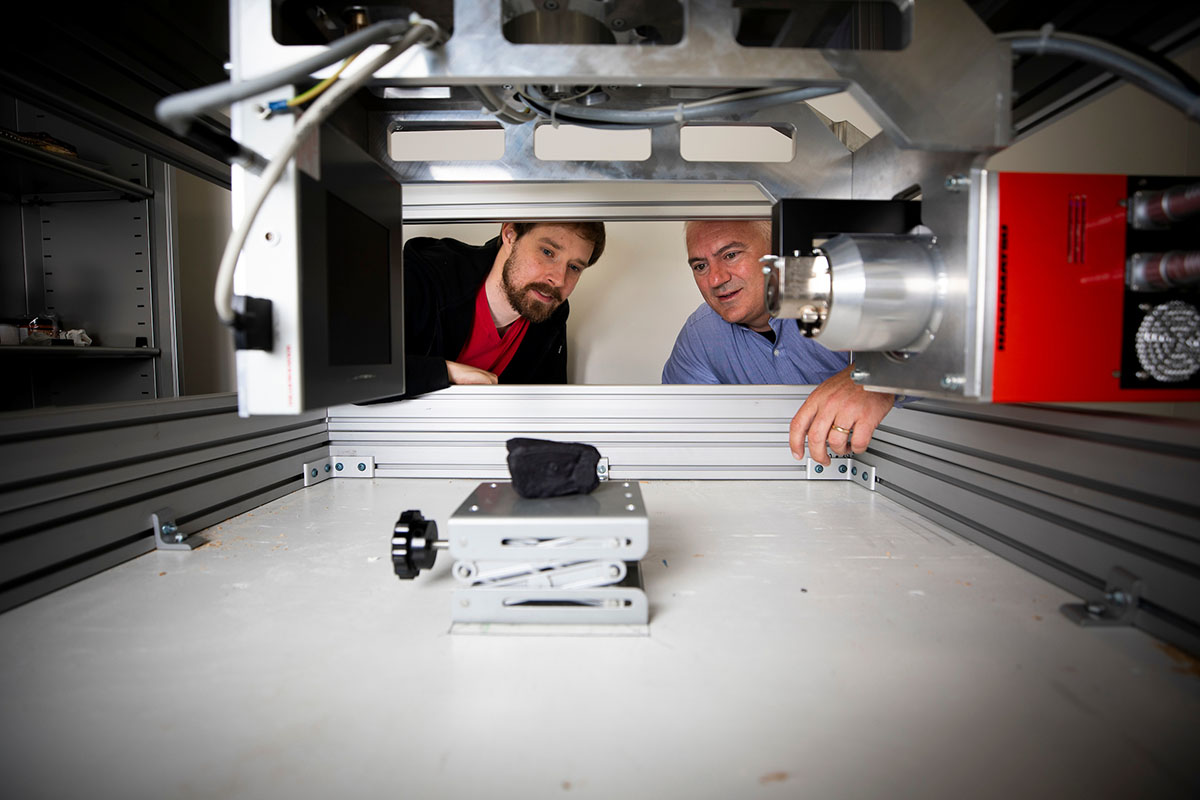By Lindsey Piercy
Dubbed "the man who can read the unreadable," the story of Brent Seales is one of patience and perseverance. With the computer science professor at the helm of the Digital Restoration Initiative, the University of Kentucky is poised to become a world-class leader in "unwrapping" cultural artifacts.
For more than two decades, Seales and his dedicated team — of staff and student researchers — have doggedly labored to do the impossible. With renowned expertise, they've non-invasively recovered fragile texts, such as Homer's "Iliad" and the Dead Sea Scrolls.
Yet, there is one mystery the team still longs to solve — revealing the elusive texts within the carbonized Herculaneum scrolls.
These papyri are among the most iconic — and inaccessible — of the world’s vast collection of damaged manuscripts. Buried and burned in the eruption of Mount Vesuvius in 79 CE, the scrolls offer a unique window to the ancient world. Unfortunately, they are too fragile to unroll.
Now, after a 10-year lull, Seales has found a way forward.
Mellon Grant Advances Digital Restoration Initiative
Thanks, in large part, to a $2 million grant from The Andrew W. Mellon Foundation, Seales finally has the materials access, funding support and technical approach needed to solve the 2,000-year-old mystery.
The prestigious Mellon grant will provide the resources the team needs to virtually unwrap and digitally restore the scrolls. It will also support the electronic compilation and dissemination of the entire Herculaneum collection, which is currently spread across four different institutions: the Bodleian Library at Oxford University, the British Library, the Institut de France and the Biblioteca Nazoinale di Napoli.
Using cutting-edge technology, Seales is embarking on a daunting task. No other researcher has managed to create a comprehensive catalog of Herculaneum papyri.
“No one can cast blame at past researchers, because no other time in history has afforded us the technological advances and collaborative spirit that exists now,” he explained. “Plus, there is a renewed interest in the classics. We have this realization that people may not always appreciate the great writings, literature and philosophy of the past. All of these issues make now the perfect time."

